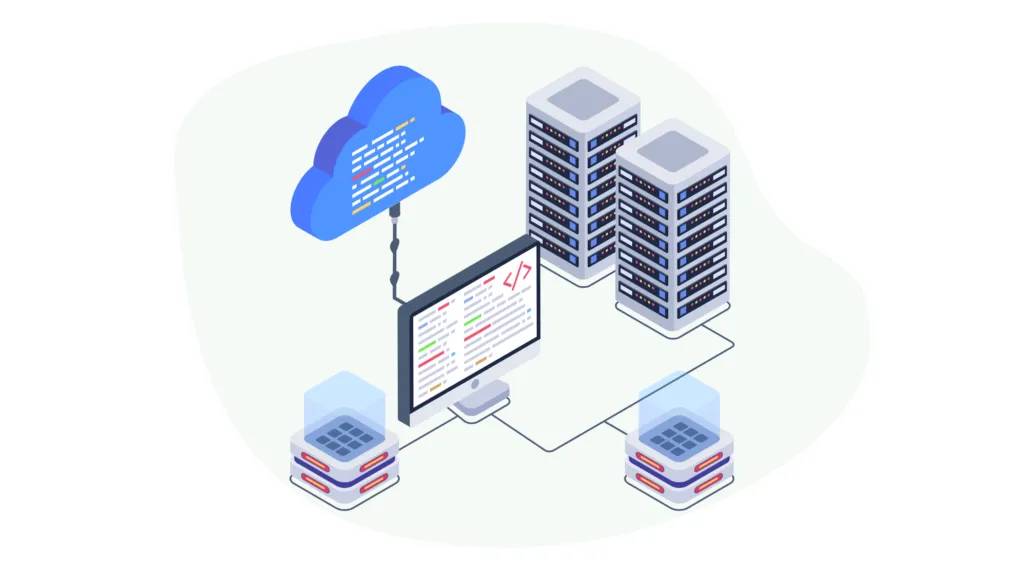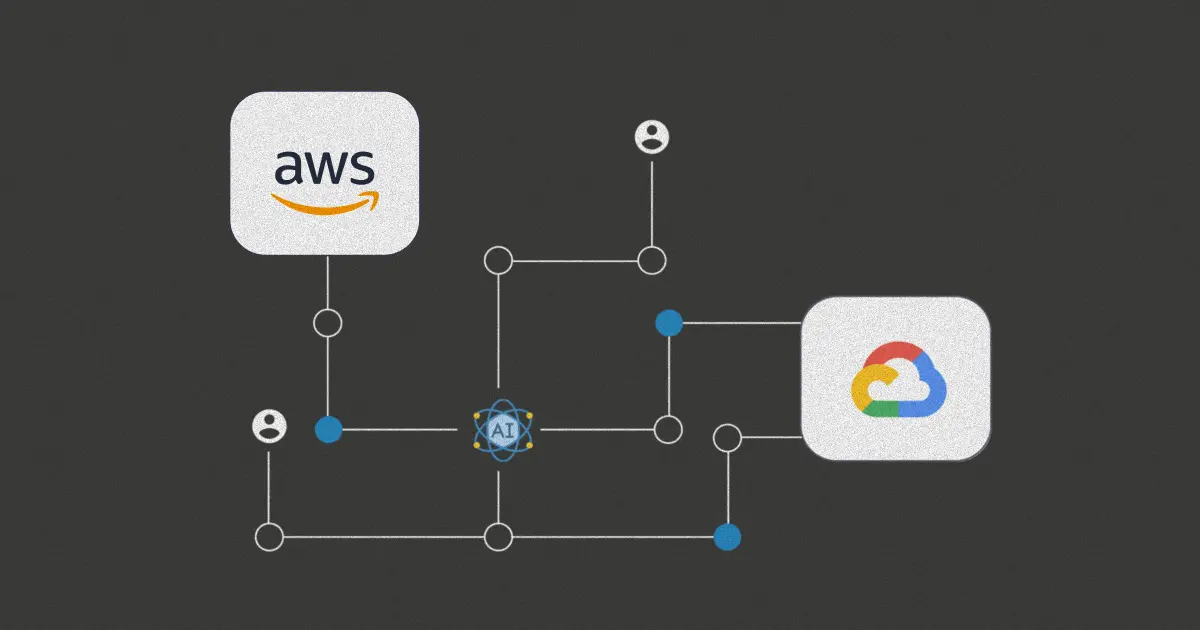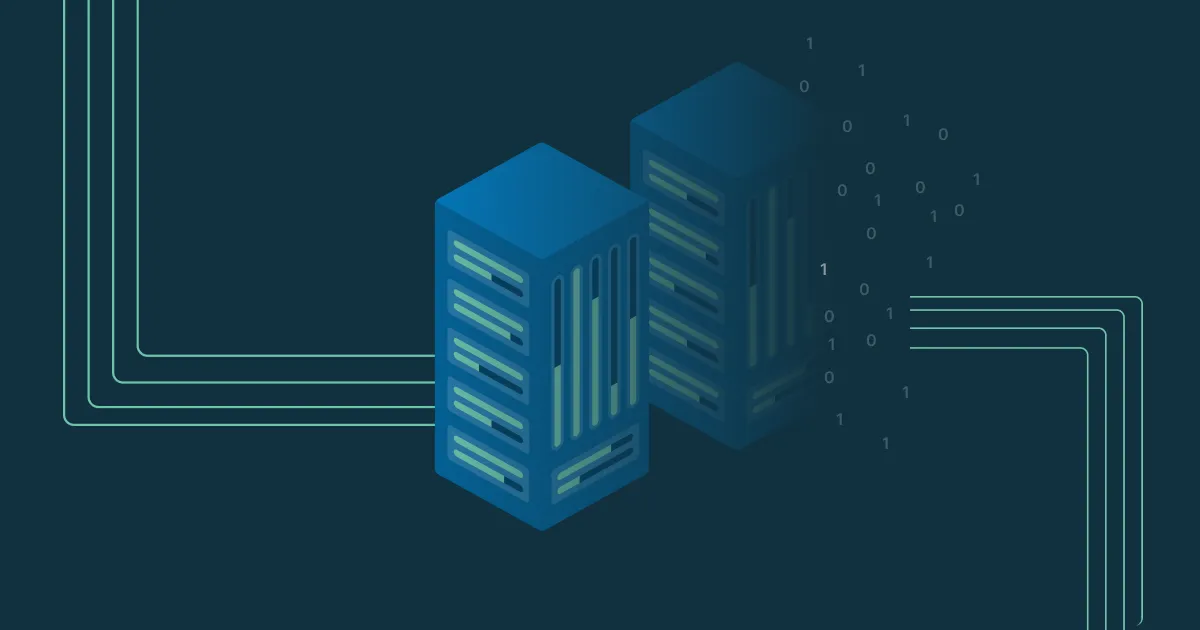What is Infrastructure as Code in Devops? Best Practices and Benefits

Managing infrastructure is a key component of any software development process. Without proper configurations, applications can face issues ranging from performance bottlenecks to functional failures. Infrastructure should be treated as an integral part of the software delivery process. However, with the rapid pace of modern development, manually managing infrastructure has become increasingly difficult. Infrastructure as Code in DevOps has emerged as the solution, enabling scalable, consistent, and automated infrastructure management throughout the SDLC. In this post, let's explore how IaC has evolved to become the standard approach for managing modern infrastructure.
What is Infrastructure as Code?
Infrastructure as Code in DevOps, or IaC, is the practice of provisioning and managing infrastructure through code instead of relying on manual processes like using a console or CLI. By codifying infrastructure, teams can create standardized, repeatable, and shareable configurations that reduce errors and improve reliability. IaC ensures that infrastructure is deployed consistently without unintended changes, while integrating seamlessly with version control systems to simplify management and track changes over time.

IaC eliminates the need for manually provisioning or configuring resources such as servers, load balances, storage, etc., with each application deployment. Instead, all these things can be done via automated IaC as a part of the delivery process. IaC is the perfect tool for infrastructure management in a DevOps environment while facilitating a collaborative configuration experience that goes hand in hand with application development.
Benefits of Infrastructure as Code
Here are the main benefits of using Infrastructure as Code, showing how it can streamline deployments, reduce errors, and improve consistency across your infrastructure.
Trackable and Auditable Infrastructure Changes
Integrating IaC with version control makes all infrastructure changes trackable and auditable. Every update, addition, or deletion is logged, so teams can review changes at any time. This approach not only improves accountability but also makes it easy to roll back to previous configurations if something goes wrong, minimizing downtime and operational risk.
Automate Infrastructure Management
IaC allows infrastructure management to be automated as part of the CI/CD pipeline. By treating infrastructure changes like application code, teams can automate provisioning, configuration, and deployment processes. This reduces manual effort, eliminates repetitive tasks, and ensures that infrastructure updates happen consistently across environments.
Ensure Repeatability and Reduce Configuration Drift
With IaC, the same infrastructure definitions are applied every time a deployment occurs. This repeatability eliminates configuration drift, where environments gradually diverge from their intended state. Maintaining consistency improves system reliability and reduces troubleshooting efforts, especially in large-scale or multi-environment deployments.
Standardize Infrastructure Practices
IaC provides an opportunity to enforce organizational standards across all environments. Teams can implement naming conventions, tags, default settings, and security policies directly in the code. Standardization ensures clarity, simplifies management, and reduces the risk of misconfigurations or overlooked resources.
Create Modular Infrastructure Configurations
Modular design is a core principle of IaC. By creating reusable components, teams can deploy common infrastructure patterns across multiple projects without duplicating code. This approach saves time, improves maintainability, and allows teams to scale their infrastructure efficiently.
Increase Deployment Speed and Reduce Errors
Automating infrastructure provisioning with IaC accelerates deployments while reducing the risk of human error. Teams can deliver updates faster, reliably replicate production environments in testing, and reduce downtime during releases. This makes IaC a key of agile, high-velocity DevOps practices.
Support Declarative and Imperative Approaches
IaC supports two main methods of defining infrastructure:
- Declarative: Focuses on the desired end state, letting the tool handle how to achieve it. This simplifies complex deployments and ensures consistency.
- Imperative: Provides step-by-step instructions for provisioning and configuring infrastructure, giving teams precise control over the process.
Both approaches allow teams to choose the method that best aligns with their workflow, organizational needs, and operational preferences.
Different Approaches to Infrastructure as Code
Understanding what is infrastructure as code is important for modern cloud-native development and infrastructure automation. Different approaches to IaC must carefully balance automation and infrastructure as code security to protect systems while maintaining flexibility and efficiency. Each of these approaches offers unique benefits, such as:
Imperative (Procedural) IaC
The imperative approach to Infrastructure as Code Iac requires users to define how the infrastructure should be created by specifying exact commands or steps. These instructions must be executed in the correct order to achieve the desired configuration, making the process more manual and procedural.
This approach provides users with smooth control over the provisioning process, making it particularly useful in scenarios where specific sequences or conditional logic are required. However, it can be harder to maintain at scale, as users must manually manage dependencies and make sure that every step is correctly ordered and executed.
Declarative (Functional) IaC
In contrast, the declarative approach focuses on what the desired end state of the infrastructure should be, rather than how to achieve it. The IaC tool then determines and performs the necessary steps to reach that state automatically. Tools such as Microtica follows the declarative model.
Declarative tools are generally preferred for their simplicity and automation, as they allow users to define the desired state without worrying about implementation details. However, it's also common to combine both approaches, depending on specific infrastructure needs and use cases.
Types of Infrastructure as Code
At the most basic level, scripting is the starting point for IaC. Users can create a simple script for an ad-hoc task like starting or stopping servers and manage it through a VCS (version control system). However, it's better to use a specialized infrastructure as a code tool for more complex requirements. These IaC tools can be broken down into the following three types;
Provisioning Tools
These tools are designed to provision, configure, and manage infrastructure resources such as servers, networks, and storage.
Configuration Management Tools
Configuration management tools focus on installing and managing software and system settings across the infrastructure. They help ensure consistency and repeatability in software environments.
Containerization and Image Building Tools
These tools are used to create portable, self-contained application environments or machine images with all required software and configurations. They streamline deployment processes and ensure consistency across development, testing, and production environments.
Infrastructure as Code in DevOps Tools
Infrastructure as Code (IaC) is now a standard practice in DevOps, giving teams the ability to define and manage infrastructure through code instead of manual setup. Several tools are widely used for IaC, each bringing its own approach and benefits. Below, we’ll look at some of the most recognized options—starting with Microtica.
Microtica
Microtica is a DevOps automation platform that makes Infrastructure as Code more accessible and efficient. It lets teams define cloud resources with reusable templates, ensuring deployments are consistent and repeatable. Unlike many tools that demand advanced cloud expertise, Microtica simplifies the process with developer-friendly workflows. Its built-in Kubernetes support is especially valuable for companies running containerized applications, reducing the complexity of managing clusters. Microtica combines infrastructure management and application delivery in one platform, helping organizations speed up release cycles and improve reliability.
Benefits of Microtica:
- Built-in Kubernetes support for streamlined containerized workloads
- Reusable templates that save time and reduce configuration errors
- Developer-friendly workflows that lower the entry barrier for IaC
- Centralized platform for managing infrastructure and applications together
- Faster, more reliable release cycles through integrated automation
Pulumi
Pulumi allows teams to define infrastructure using programming languages like JavaScript, Python, Go, and C#. It’s a flexible tool that supports multiple cloud providers and integrates with CI/CD pipelines, making it suitable for organizations that want to connect infrastructure and application code.
Benefits of Pulumi:
- Define infrastructure with popular programming languages
- Works across multiple cloud providers
- Integrates with CI/CD workflows
Ansible
Ansible is a well-known tool for automation and configuration management. It uses simple YAML-based playbooks and has an agentless design, which makes it easier to get started and manage both on-premises and cloud resources.
Benefits of Ansible:
- Simple YAML-based playbooks for defining infrastructure
- Agentless setup with minimal overhead
- Can manage both on-premises and cloud environments
Infrastructure as Code in DevOps Best Practices
Implementing Infrastructure as Code (IaC) effectively in DevOps goes beyond choosing a tool. It requires adopting practices that make infrastructure consistent, reliable, and easy to scale. While tools like Pulumi and Ansible provide basic IaC capabilities, Microtica is designed to fully support these best practices and simplify adoption for teams of any size.
Use Version Control for IaC Files
Version control is essential for tracking changes, reviewing updates, and rolling back configurations when needed. With Microtica, all infrastructure templates and deployment scripts are easily versioned within the platform. Teams can collaborate on templates just like they would with application code, ensuring changes are documented, auditable, and recoverable.
Automate Testing of Infrastructure Code
Testing infrastructure code helps catch misconfigurations early, reducing the risk of downtime or errors in production. Microtica supports automated validation of IaC templates before deployment, allowing teams to detect and fix issues without manual intervention. This reduces delays and makes infrastructure safer to deploy repeatedly.
Modularize Code into Reusable Components
Breaking infrastructure code into reusable modules improves maintainability and reduces duplication. Microtica’s template-based system encourages modular design by letting teams define components once and reuse them across multiple projects or environments. This not only speeds up deployment but also ensures consistency across the organization.
Streamline Collaboration Between Teams
Infrastructure success relies on close collaboration between development and operations teams. Microtica bridges this gap by providing a single platform where both teams can contribute to infrastructure definitions. Developers can focus on defining application requirements while operations teams manage deployments and scaling, all without switching between multiple tools or environments.
Automate Deployments and Rollbacks
One of the most common pain points in IaC is managing deployments safely and quickly. Microtica offers built-in automation for deploying and rolling back changes. This ensures that updates are applied consistently and allows teams to recover from mistakes rapidly, minimizing downtime and operational risk.
Maintain Visibility and Governance
Effective IaC requires oversight to ensure compliance and adherence to organizational standards. Microtica provides dashboards and logging for all infrastructure changes, giving teams full visibility into what has been deployed, who made changes, and how resources are being used. This simplifies audits and strengthens governance without adding manual work.
By following these best practices and using a platform like Microtica, teams can maximize the benefits of Infrastructure as Code—reducing errors, increasing deployment speed, and maintaining consistent, reliable infrastructure across environments. While basic IaC tools like Pulumi and Ansible can handle simple automation, Microtica is built to make advanced DevOps practices straightforward and accessible for teams of all skill levels.
Conclusion
Infrastructure as Code has become a must-have to efficiently manage infrastructure in modern software development environments. Developers have abundant choices to facilitate their exact infrastructure configuration needs with different tools and services catering to different needs. IaC has come a long way, and the introduction of GitOps has made it the perfect platform to integrate infrastructure management as a core part of the development pipeline.
FAQ
How does IaC relate to DevOps?
IaC is a core DevOps practice that automates infrastructure setup using code, ensuring consistency, repeatability, and faster deployments, which aligns with DevOps goals of collaboration and continuous delivery.
Are IaC and Terraform the same?
No. IaC is the concept of managing infrastructure through code, while Terraform is a specific tool that implements IaC to provision and manage cloud resources.
Is YAML infrastructure as code?
YAML itself isn’t IaC, but it’s commonly used to write IaC configurations in tools like Ansible, Kubernetes, and CloudFormation, allowing infrastructure to be defined as code.
What does infrastructure mean in DevOps?
In DevOps, infrastructure refers to the underlying systems, servers, networks, and services that support applications, including how they’re provisioned, configured, and managed.
Subscribe to receive the latest blog posts to your inbox every week.
*By subscribing you agree to with our Privacy Policy.

Relevant Posts

.webp)

